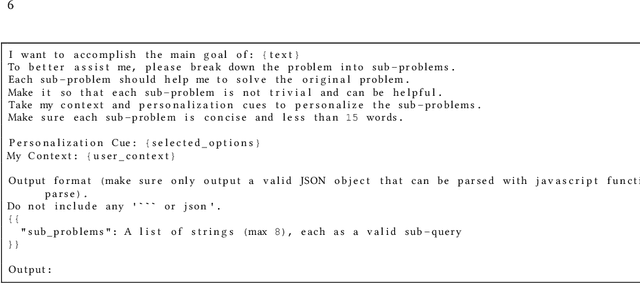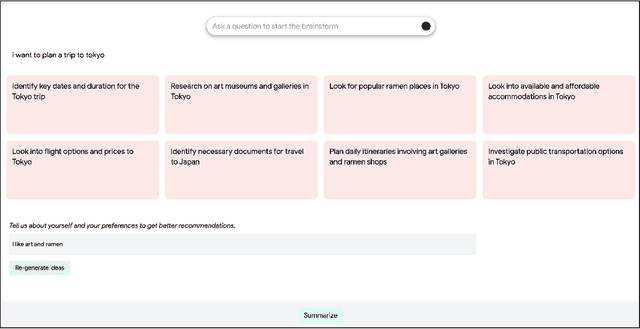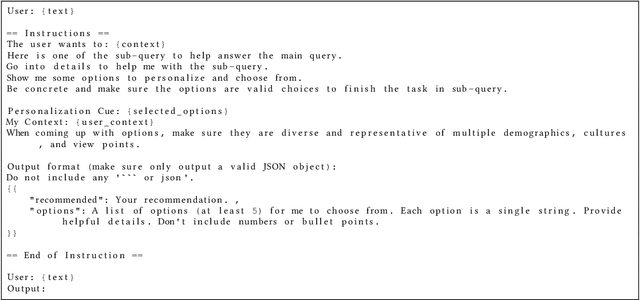Chinmay Kulkarni
Multi Agent based Medical Assistant for Edge Devices
Mar 07, 2025Abstract:Large Action Models (LAMs) have revolutionized intelligent automation, but their application in healthcare faces challenges due to privacy concerns, latency, and dependency on internet access. This report introduces an ondevice, multi-agent healthcare assistant that overcomes these limitations. The system utilizes smaller, task-specific agents to optimize resources, ensure scalability and high performance. Our proposed system acts as a one-stop solution for health care needs with features like appointment booking, health monitoring, medication reminders, and daily health reporting. Powered by the Qwen Code Instruct 2.5 7B model, the Planner and Caller Agents achieve an average RougeL score of 85.5 for planning and 96.5 for calling for our tasks while being lightweight for on-device deployment. This innovative approach combines the benefits of ondevice systems with multi-agent architectures, paving the way for user-centric healthcare solutions.
Farsight: Fostering Responsible AI Awareness During AI Application Prototyping
Feb 23, 2024Abstract:Prompt-based interfaces for Large Language Models (LLMs) have made prototyping and building AI-powered applications easier than ever before. However, identifying potential harms that may arise from AI applications remains a challenge, particularly during prompt-based prototyping. To address this, we present Farsight, a novel in situ interactive tool that helps people identify potential harms from the AI applications they are prototyping. Based on a user's prompt, Farsight highlights news articles about relevant AI incidents and allows users to explore and edit LLM-generated use cases, stakeholders, and harms. We report design insights from a co-design study with 10 AI prototypers and findings from a user study with 42 AI prototypers. After using Farsight, AI prototypers in our user study are better able to independently identify potential harms associated with a prompt and find our tool more useful and usable than existing resources. Their qualitative feedback also highlights that Farsight encourages them to focus on end-users and think beyond immediate harms. We discuss these findings and reflect on their implications for designing AI prototyping experiences that meaningfully engage with AI harms. Farsight is publicly accessible at: https://PAIR-code.github.io/farsight.
Beyond ChatBots: ExploreLLM for Structured Thoughts and Personalized Model Responses
Dec 01, 2023



Abstract:Large language model (LLM) powered chatbots are primarily text-based today, and impose a large interactional cognitive load, especially for exploratory or sensemaking tasks such as planning a trip or learning about a new city. Because the interaction is textual, users have little scaffolding in the way of structure, informational "scent", or ability to specify high-level preferences or goals. We introduce ExploreLLM that allows users to structure thoughts, help explore different options, navigate through the choices and recommendations, and to more easily steer models to generate more personalized responses. We conduct a user study and show that users find it helpful to use ExploreLLM for exploratory or planning tasks, because it provides a useful schema-like structure to the task, and guides users in planning. The study also suggests that users can more easily personalize responses with high-level preferences with ExploreLLM. Together, ExploreLLM points to a future where users interact with LLMs beyond the form of chatbots, and instead designed to support complex user tasks with a tighter integration between natural language and graphical user interfaces.
AI Alignment in the Design of Interactive AI: Specification Alignment, Process Alignment, and Evaluation Support
Oct 23, 2023Abstract:AI alignment considers the overall problem of ensuring an AI produces desired outcomes, without undesirable side effects. While often considered from the perspectives of safety and human values, AI alignment can also be considered in the context of designing and evaluating interfaces for interactive AI systems. This paper maps concepts from AI alignment onto a basic, three step interaction cycle, yielding a corresponding set of alignment objectives: 1) specification alignment: ensuring the user can efficiently and reliably communicate objectives to the AI, 2) process alignment: providing the ability to verify and optionally control the AI's execution process, and 3) evaluation support: ensuring the user can verify and understand the AI's output. We also introduce the concepts of a surrogate process, defined as a simplified, separately derived, but controllable representation of the AI's actual process; and the notion of a Process Gulf, which highlights how differences between human and AI processes can lead to challenges in AI control. To illustrate the value of this framework, we describe commercial and research systems along each of the three alignment dimensions, and show how interfaces that provide interactive alignment mechanisms can lead to qualitatively different and improved user experiences.
The Design Space of Generative Models
Apr 15, 2023Abstract:Card et al.'s classic paper "The Design Space of Input Devices" established the value of design spaces as a tool for HCI analysis and invention. We posit that developing design spaces for emerging pre-trained, generative AI models is necessary for supporting their integration into human-centered systems and practices. We explore what it means to develop an AI model design space by proposing two design spaces relating to generative AI models: the first considers how HCI can impact generative models (i.e., interfaces for models) and the second considers how generative models can impact HCI (i.e., models as an HCI prototyping material).
 Add to Chrome
Add to Chrome Add to Firefox
Add to Firefox Add to Edge
Add to Edge